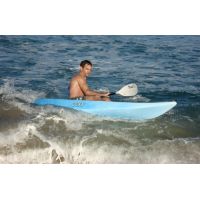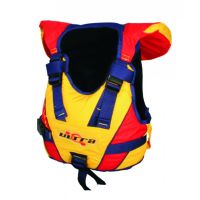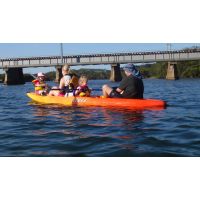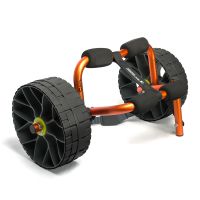Cart is empty
Sea Kayak Questions
We are often asked questions about paddling in general and about Australis products in particular. If you have a question that has not been answered in these pages, please contact Australis on 02 4285 2000.
To make it easy to find what you are looking for, questions and answers relating to:
GENERAL
What makes a sea kayak different from a recreational kayak?
There are a number of features that make a sea kayak different from a recreation kayak, including:
- A sea kayak will have a rudder or a drop-skeg
- A sea kayak has a raked back bow to ride up on rocks and beaches
- A sea kayak will have bulkheads, which separate the cockpit area from the storage areas in each end
- A sea kayak will have hatches, to access the storage areas
- A sea kayak will generally not have floatation as you need this area to store the gear in
- A longer (expedition) sea kayak may also have a day hatch (usually behind the cockpit) and allows you to take items with you that need to be able to be accessed whilst on the water
- A sea kayak will have decklines around the perimeter which gives places to secure items to be stored on top of the deck, and give a place to hold the sea kayak when doing rescue procedures
- Sea kayaks will have adjustable footrests with a steering system. "Flap steering" gives a better paddling experience
SEA KAYAK FEATURES
THIGH BRACE
Why do Australis sea kayaks have a thigh brace? What is it for?
A thigh brace is used to give you more control in rough water and when Eskimo rolling.
It allows the paddler to push their knees up to the top deck and "lock-into" the kayak, giving maximum control.
Australis include a thigh brace in all of our single sea kayaks, and it is an added-in feature that can be removed if not required.
If you have big thighs or long legs, you might find that you don't need a thigh brace as you are able to reach the top deck with your knees and lock in without the brace.
Some sea kayaks do have a thigh brace, but it is moulded-in as part of the hull.
In a sea kayak with the thigh brace moulded into the hull, you might find it difficult to get into and out in an emergency situation.
Also, it may restrict your ability to move when out on the water during extended periods of paddling, resulting in pins-and-needles in your legs and feet because of reduced blood flow.
HATCHES and BULKHEADS
Why do Australis use rubber push-on hatches and not screw hatches or hard covers over neoprene?
Australis use push-on rubber hatches on our sea kayaks, as we have found that they give the most water-tight seal.
Over the years, Australis have used a number of different types of hatches, including screw hatches and hard covers over neoprene, and have found that the push-on hatches are the most effective.
I have a bulkhead-sealed storage area. Can I just put my phone and keys in this hatch and wil they stay dry?
Whilst some storage areas can be quite dry, none are absolutely guaranteed to be water tight and there is always the chance that condensation will build up while you are out in the sun, on the water .
For this reason, Australis strongly recommends that you put your belongings into dry bags, firstly to keep them dry (especially anything that may be damaged by water) and secondly to prevent your things spreading out inside your kayak.
DECKLINES
Why are there decklines on my sea kayak?
Decklines are included on a sea kayak for 2 main reasons, including:
- Gives a place to secure gear that needs to be stowed on the deck
- Gives places to be able to securely grab onto the sea kayak during rescue procedures. This could be someone who has come out of their kayak and needs to hold on whilst they are in the water, or it could be people trying to pull the kayak up onto another kayak to empty the water out before doing a deep-water re-entry.
Make sure the decklines on a sea kayak are at least 6mm thick, so they will be strong enough and not break under adverse conditions.
Some kayaks being sold as "sea kayaks" only have 3, 4 or 5mm rope as decklines, and these narrower decklines may not be suitable if you get caught in an emergency situation.
SPRAYDECKS
Do you have spraydecks to suit your sea kayaks?
Yes, We have a range of spraydecks with a rip-stop nylon waist section (with a pocket) attached to a neoprene deck section. Full neoprene spray decks are also available on request (a waist size is needed).
RUDDERS and SKEGS
How is a skeg different from a rudder?
Generally, a skeg is used to assist with straight line tracking, as it helps to stop the rear of the kayak moving away from the centre line.
Some skegs are moulded into the kayak, whilst others are an extra that is added on later.
The other option that you may come across is that some skegs are fixed in position, whilst others are "retractable".
Why do Australis use rudders instead of just a skeg?
A rudder gives you more control than just a skeg, as rudders are used to assist with straight line tracking, as well as turning, and especially to counter the effects of wind and wave action on your sea kayak.
As mentioned above, a skeg helps to maintain the position of the stern (rear) of the kayak, and the paddler turns the kayak using paddle strokes. To turn the kayak, the paddler will generally use both forward and reverse paddle strokes. Using reverse strokes, whilst turning the kayak, interrupts the forward motion of the kayak, slowing it down, and then the paddler needs to exert more effort to get the kayak back up to it's cruising speed.
A rudder allows maximum forward momentum to be maintained at all times. Turning is effected through use of foot operated rudder controls, whilst the paddler keeps their paddling rhythm undisturbed.
Why do Australis use a traditional drop-over rudder rather than an integrated rudder?
When it comes to rudders on sea kayaks, there are two main options that you have to choose from, a traditional drop-over rudder or an integrated rudder.
At Australis, we use a traditional "drop-over" rudder because:
- we prefer the versatility of being able the have the rudder in the water, or stored up on the rear deck;
- we have found that a drop-over rudder is more responsive, especially in open ocean conditions, because they give a deeper penetration into the water;
- the drop-over system is easier to replace if it is damaged in rough paddling conditions.
At Australis, we do not use an "integrated" rudder because:
- they are easier to damage (especially in rocky or shallow conditions) because they are permanently down;
- they don't penetrate as deeply into the water, meaning that you have less control. This is especially evident in a swell in open ocean conditions because as you travel up and down the swell, a shallower rudder blade will come out of the water more often, meaning that you have less control of the kayak (when you need it most in the rough conditions).
The first plastic sea kayak that we made, the "Trilogy" had an integrated rudder, and because of the short comings that we found with this system, all of our sea kayaks are now supplied with a "traditional drop-over rudder".
© 2013-2026 Australis Canoes. Powered by AVS Online Store




.jpg)

